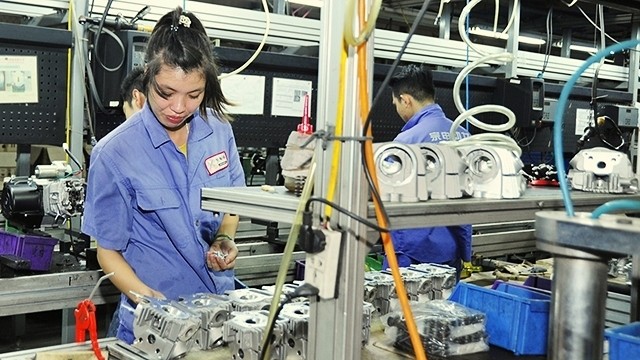In particular, the fourth Industrial Revolution (Industry 4.0) is taking place at a fast pace and requires more selective decisions in attracting FDI.
According to the Foreign Investment Agency under the Ministry of Planning and Investment (MPI), from the beginning of the year to September 20, FDI into Vietnam reached a record of US$25.48 billion, up 34.3% over the same period in 2016. There are 126 countries and territories investing in Vietnam.
Foreign investors have bought into 19 out of 21 sectors in the national sectoral classification system, of which the processing and manufacturing sector accounts for the highest proportion with US$183.5 billion, accounting for 59.1% of total investment. Foreign investment has also been recorded in all 63 provinces and cities nationwide.
However, it seems that Vietnam has not fully utilised the benefits of FDI inflows. Almost 30 years after the Law on Foreign Investment came into force, the business link between domestic and foreign investors is still fuzzy, while spillover effect on technologies and labour productivity from foreign partners to domestic businesses is still limited, especially in the field of high technology.
The World Bank's report entitled “Vietnam: Enhancing Enterprise Competitiveness and SME Linkages” indicates that Vietnam has succeeded in attracting FDI and joining the global value chain, but most domestic companies are small in size and serve the domestic market only.
FDI has brought enormous benefits to Vietnam in terms of growth, exports and employment, but there is less concern on developing FDI linkages with the domestic economy. As a result, the proportion of foreign-invested enterprises using domestic inputs is considerably lower than that of other countries.
In addition, there is a tendency that FDI firms buying domestic inputs appears to be inversely proportional to the direct export share in revenue and the proportion of foreign owned capital. This trend shows that FDI companies seeking markets and joint ventures tend to set up backward links higher than other types of enterprises.
In particular, foreign electronics companies rely on their own suppliers. As with Samsung, they rely heavily on Korean intermediate vendors based in Vietnam and there are only four Vietnamese suppliers present out of 67 suppliers to Samsung. However, these four primary suppliers are mainly packaging companies, with low value added.
In the automotive industry, the localisation rate is only about 10-20%, much lower than Thailand's 45%. Value additions are made at low value added stages, including assembly, welding and painting. In addition, domestic firms only contribute low-value and labor-intensive items, such as tires, batteries and wires. Up to now, there are about 200-300 enterprises producing automobile parts, but most of them are SMEs with low production capacity and technology.
Regarding technology transfer, during 2006 - 2015 period, among nearly 14,000 new FDI projects, there were only about 600 technology transfer contracts (4.28%), not to mention that more than 80% of FDI enterprises using the world’s average technologies and 14% at low level and backward, with just 5-6% using high-technologies.
Hoang Manh Tan, Deputy General Director of Son Ha International JSC, said that FDI inflows to Vietnam only deal with labour and social security, but with the ongoing Industry 4.0 and robotisation, FDI enterprises can operate from abroad through networks; obviously Vietnam will not gain benefit. FDI projects are occupying favourable positions and benefiting from policies and benefits from free trade agreements. Meanwhile, domestic enterprises do not participate much in the value chain.
Chairman of Vietnam's Association of Foreign Invested Enterprises, Nguyen Mai, said that this is a great opportunity for Vietnam to not only orient FDI attraction but also change the State governance, business management and corporate activities in the direction of Industry 4.0 progress. It is time to change the basic orientation of FDI attraction.
Vietnam's economy has reached a relatively high development level, so the demand for quality FDI should also be higher. Especially, in Industry 4.0, Vietnam cannot continue to stand outside. This is a great opportunity if Vietnam has a new direction for attracting FDI, focusing on higher quality sources and future technologies.
The strategy of attracting FDI should aim at the common interest of the nation, encouraging localities to cooperate and compete in attracting FDI through the formation of unlimited sectoral clusters, because the administrative boundaries are aimed at effectively and responsibly using resources.
Deputy Head of the Central Institute for Economic Management Nguyen Thi Tue Anh said that Vietnam has been heavily dependent on FDI in the context of weak domestic resources and the supply of FDI around has not reached much of a high level of technology and business culture. In the coming period, Vietnam should strive to accelerate industrialisation in both a broad and deep manner to avoid the phenomenon of too soon a transition to the post-industrialisation era.
















